(CNN) — Most cruise passengers have made their way back home, and the vast ships that once ferried them from port to port are moored up or back on the water, relocating for the next stage in their journeys.
But what about the crews that kept these gigantic vessels going, and looked after guests as panic over the coronavirus swept across the oceans?
For many of those working in the cruise industry, the nightmare of being aboard a ship that had carried people with coronavirus has continued — sometimes without an end in sight.
Isolated, denied the swift repatriations offered to passengers and, in some cases, made to endure tough conditions without pay, some of those sequestered at sea have been describing the bureaucratic tangle that has trapped them, often within meters of shore.
«I’m hoping we don’t get forgotten about, to be honest,» says MaShawn Morton, who works for Princess Cruises. «It seems like nobody cares what’s happening to us out here.»
As of May 5, there were over 57,000 crew members still aboard 74 cruise ships in and around US ports and the Bahamas and the Caribbean, according to the US Coast Guard. Many more hundreds were stuck on vessels elsewhere across the world’s oceans.
With no passengers to look after and their quarantines completed, the employees are left wondering why they haven’t been allowed home.
In American waters, cruise ships have been mired in regulations imposed by the Centers for Disease Control and Prevention, the US health protection agency.
The CDC’s official line is that crew members can only be permitted to disembark for repatriation or transfer between ships provided they’ll be transported by specially chartered aircraft or personal vehicles.
“The information has been changing literally hour by hour, day by day. Not knowing what’s happening has been very stressful.”
MaShawn Morton, Princess Cruises employee
Cruise ship crew unaffected by Covid-19 are able to disembark and travel via commercial aviation, but only on a case-by-case basis with prior CDC approval. The cruise line must complete a statement «attesting to the status of the ship as free of COVID-19.»
Until last weekend, the legal consequences of breaching these regulations have, according to some crew, delayed cruise lines from agreeing to them.
On Sunday, Royal Caribbean and its brands, including Celebrity Cruise Line, reached an agreement with the CDC for disembarking crew, writing to employees to say that it would adhere to the strict guidelines and abide by their implications.
«The CDC has asked me and other cruise line leaders to sign a letter limiting our options for getting you home and taking responsibility for your actions in order to secure their approval to disembark you,» writes Celebrity Cruises CEO Lisa Lutoff-Perlo, in a letter seen by CNN.
«In the spirit of doing everything we possibly can to get you home, I have decided to sign this letter.»
Other cruise lines may follow suit, but a combination of wariness surrounding cruise ships, the details and implications of the CDC’s policies, a lack of commercial flights, widespread travel bans and ongoing uncertainties means many crews remain stuck.
Near but far
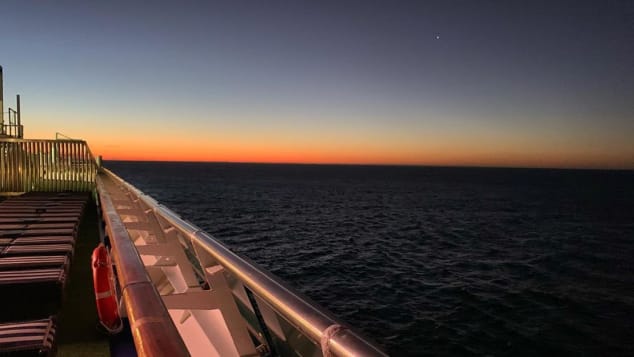
Courtesy of @droozah
American Alex Adkins, a senior stage technician on Freedom of the Seas, a Royal Caribbean ship, has been waiting at sea since mid-March when the vessel’s guests were offloaded in Miami.
«Since then, we’ve had no guests and we’ve just been floating off the coast of Barbados,» he says.
For the first week, the crew took advantage of the Freedom of the Seas’ pool and the gym, enjoying facilities empty of guests. Then, they went into a mandatory two-week self-isolation, says Adkins.
Adkins tells CNN that crew members have since been told that they’re no longer considered working employees and they were paid out through the end of April.
He said efforts to charter flights to get the crew home stalled repeatedly because Royal Caribbean had yet to sign up to CDC procedures, but he accepts the cruise line was in a difficult position before it finally agreed to the conditions.
«Our leaders signed it in hopes of getting us home soon and safely, and I hope everyone going home understands the huge sacrifice they made,» says Adkins.
For Adkins, and many of those on board, the new development has been «an incredible morale boost» and he describes «a tangible electricity permeating through the fleet.»
That said, he’s aware that many workers on other ships remain in a floating purgatory.
Cruise Lines International Association, the body that oversees the majority of the world’s cruise lines, tells CNN it is «working with the CDC to address these unprecedented challenges and repatriate crew members as soon as possible.»
The situation, says a CLIA representative, is «very complex» and «is evolving day by day.»

Courtesy MaShawn Morton
Morton is another crew member still waiting to get home. He says he’s worked with Princess Cruises for about five years and started his fourth Princess contract earlier this year, on board the Sky Princess, a gigantic, gleaming ship that can accommodate 3,660 passengers and 1,346 crew.
Morton’s job was supposed to last until mid-October as the vessel sailed across the Caribbean, the Atlantic and over to the Baltics and traversed Europe. As the pandemic spread globally and cruises were canceled or recalled, the Sky Princess offloaded its passengers in Miami on March 14.
Crew members, including Morton, remained on board, moored at the city’s port. Home seems so close, yet so far.
Morton says that at first, the mood was positive. Morton says crew entered roughly 20 days of self-isolation largely confined to cabins but understanding that they would then be able to disembark and head home.
«Once the passengers disembarked, we felt safe,» says Morton. «We didn’t have any sign of sickness. We were glad that we were still being paid and employed.»
Toward the end of this period, Morton said he and his colleagues were told their contract would be formally coming to an end. He said they were informed they would no longer be paid from June onwards.
«We were actually pretty surprised at the length of time that they were still able to pay us,» says Morton.
Morton remains unsure how things will progress on board Princess Cruises ships.
When quarantine on the Sky Princess came to an end in April, Princess started to trans-ship crewmembers — moving crew between ships in order to group workers by nationalities so that they can then be sailed directly home or to an appropriate airport.
It’s a solution to the lack of commercial flights — and the difficulties in getting the CDC to approve charters.
‘Stressful’ time
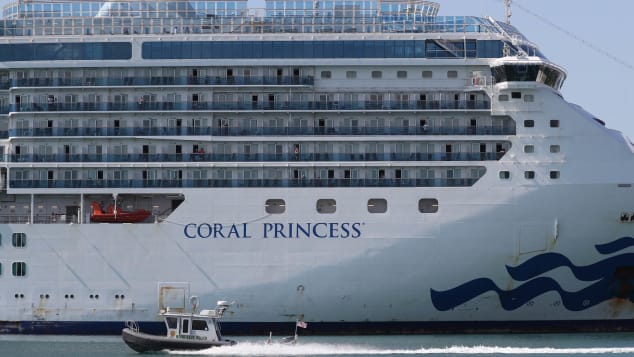
Joe Raedle/Getty Images
Not all are happy with this solution though. Sailing home can take weeks, where flights take hours. Plus, there’s the ongoing threat of cross-infection.
«[When trans-shipping began] that’s really when tensions and stress levels began to rise,» says Morton.
Plus, for American crew members, trans-shipping seemed to make little sense. They were docked in Miami, why couldn’t they just disembark?
The Sky Princess was a «healthy» ship, with no reported cases of Covid-19 and Morton was concerned he might move to one where passengers or crew had previously tested positive.
«People wanted to go home instead of going to another ship,» he says. «The information has been changing literally hour by hour, day by day. Not knowing what’s happening has been very stressful.»
On April 25, Morton says he was moved from the Sky Princess to the Emerald Princess, along with other American employees of Princess Cruises, a transfer that took place in rough seas.
«The wave swells were very high, I actually took some videos to send to my mother of how bad the tender ship was rocking and then I ended up losing internet service,» says Morton.
It was a full 24 hours before Morton was able to reconnect with his panicked mother and assure her that he was OK.
Morton says he recently heard Princess Cruises’ American crew are likely going to be moved again as part of the repatriation efforts, this time, to the Coral Princess, which saw Covid-19 fatalities earlier in the pandemic.
«Right now, we’re hoping that before that happens, the CDC will release the ban, and allow Americans to enter the country,» he says.
Princess Cruises did not respond specifically to questions about why it’s taken so long to process the crew’s disembarkation, nor why US crew members moored in American ports were involved in the trans-shipping process rather than allowed to remain in situ until they could leave.
A spokesperson told CNN the company is «deeply committed to reuniting our shipboard team members with their families safely and continue to make progress with arranging travel to their home countries.»
The cruise line said hundreds of crew members disembark daily, with 4,000 returned home so far.
Princess Cruises told CNN the company has been actively preparing and providing attestations for crew disembarkation in line with the CDC’s policies, which insist that crew members must not stay overnight at a hotel, use public transport or enter airport terminals.
Approval must also be sought from federal, state and local public health authorities.
Difficult situation
Caio Saldanha, a DJ from Brazil currently on board the Celebrity Infinity ship, tells CNN that Celebrity, owned by Royal Caribbean, is looking to trans-ship crew stuck on ships across the Bahamas, as part of repatriation efforts.
Saldanha and his fiancée Jessica Furlan, an on-board activities host, say their long wait at sea has been made all the more frustrating because they were allowed to board the ship on March 14 in Miami, a day after the US government issued a no-sail order suspending all cruise voyages.
On March 23, Celebrity Infinity’s ship management informed crew that those who’d been on board from March 9 through 14 could have been exposed to Covid-19. A crew member who’d been with the ship during this period had tested positive for the virus.
By March 28, the crew were confined to their cabins as the ship went into lockdown.
Saldanha says there were issues from day one.
«We were assigned to a cabin with really bad sanitary conditions,» he says.
He says he and his fiancé moved from a cabin he characterizes as moldy, dusty and in «really bad condition,» to a better-quality cabin, albeit one that didn’t have windows.
«Almost all crew cabins are inside shell cabins, with no fresh air or natural light,» says a British crew member who works in the entertainment department of a Royal Caribbean ship. He spoke to CNN on condition of anonymity, worried about the impact on his job.
Saldanha says he feels let down by Celebrity. He says strict social distancing should have been mandated from the outset and feels the virus threat wasn’t taken seriously enough by some crew members.
Royal Caribbean’s spokesperson told CNN it was looking into Saldanha’s claims.
According to the new plan, outlined in Celebrity CEO Lisa Lutoff-Perlo’s letter, Saldanha and Furlan will transfer to Royal Caribbean’s Rhapsody and travel home by sea.
Life at sea
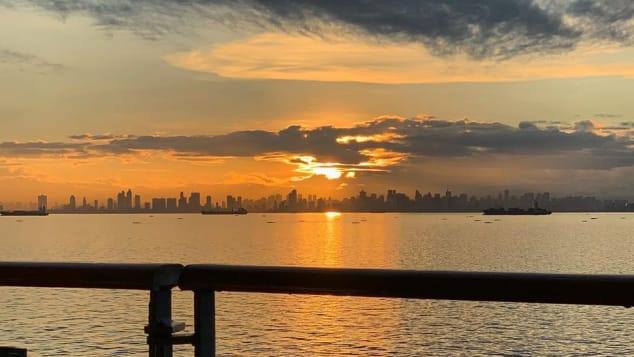
Courtesy of @droozah
While repatriation efforts are ongoing, on board the Emerald Princess, Morton says his daily routine is characterized by twice daily temperature checks, designated meal slots and social distancing.
«The ship is a ghost town, nobody’s out and about,» he says. «Mealtimes, we’re all separated by our ships. And it’s either one person to a table or two people to a table, with distance.»
Despite the difficult circumstances, Morton’s trying to stay positive and engaged.
«I’m reading books, I’m reaching out to state representatives and delegates. I’m reaching out to lawyers. I’m doing exercises, I’m doing Max 30 Fitness routines. I do a ballet barre, or I watch movies.»
“It’s a little crazy hey? I’ve learned to lean in to the absurdity.”
Drew Fairley, cruise ship performer
On the other side of the world, Drew Fairley, an Australian actor working his first ever cruise, is awaiting repatriation while on board the Pacific Explorer, a P&O Cruises Australia ship that’s currently in the Philippines.
The ship disembarked passengers on March 16 in Sydney but was ordered to leave two weeks later. As of May 5, it was moored outside Manila Bay.
«I was still under contract when we were asked to exit Sydney harbor on April 2,» Fairley says. «I’ve played out the rest of my contract sailing to Manila to try and repatriate back to Sydney.
«It’s a little crazy hey? I’ve learned to lean in to the absurdity.»
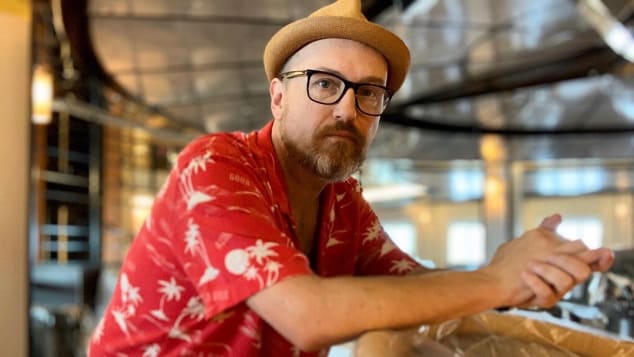
Courtesy of @droozah
To pass time on board, Fairley’s started an online chat show, appropriately entitled «Actual Cabin Actual Fever.»
«I was very inspired by the amazing creative output in the world. It was like a response to the sadness and fear Covid created,» Fairley says. «Songs, concerts, artwork, comedy, dance and sometimes just hanging out for a while online.»
Fairley’s videos, shared on his Instagram, @droozah, have attracted viewers from across the world. His sardonic humor and enthusiasm — there are costume changes and songs and Fairley plays multiple characters — were the recipe for a hit.
«They are very silly but as the journey became more bizarre the darker they become,» he says.
For Fairley, his videos have provided a creative outlet — and helped inspire connections during isolation.
«The response is electric. So many people are sending in messages. People need a giggle in these stressful times.»
Uncertain future
Fairley is confident he will soon be repatriated by P&O Australia.
Carnival Corporation, P&O Cruises Australia’s parent company, said it had been hampered by logistical problems but was working to repatriate its employees.
«The safety and health of our guests and crew, along with compliance and environmental protection, are our top priorities,» said a Carnival Cruise Line spokesperson in a statement to CNN.
«We are currently engaged in the effort to repatriate crew members during our pause to their respective home countries.
«This has become more difficult in recent days because of port closings and other travel restrictions, but we continue to make strong progress.»
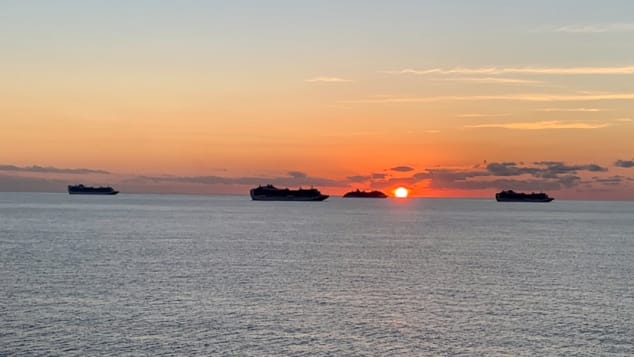
Courtesy MaShawn Morton
Back on the other side of the world, Morton expresses frustration over what he sees as double standards within his homeland.
«I feel that the cruise ship industry, we’re being vilified. I feel like we’re being scapegoated,» he says. «In reality, it’s more certain that I’m healthy and have been under stricter conditions on board a ship than anybody in the States has been.»
For Morton, a tipping point was hearing that the state of Florida is opening beaches and businesses but reportedly denying entry to American cruise ship crew.
«I feel like we’re being treated like criminals who have committed no crime, and for our country to refuse us entry, knowing that we’ve been tracking our health for over a month now, and that we are not sick, is…I’m just really struggling for the mindset of that. What makes that okay?»
Adkins, on board the Freedom of the Seas near Barbados, says he will continue to «keep fighting» to shine a light on those stuck at sea, even after he disembarks.
Morton also says he doesn’t want cruise ship crew to be forgotten.
He says: «I really just want to emphasize to all of the governments around the world to stop saying that the last cruise ship has come home, and the last people on cruise ships have come home, because that’s so far from the truth.»
Source: CNN Travel

